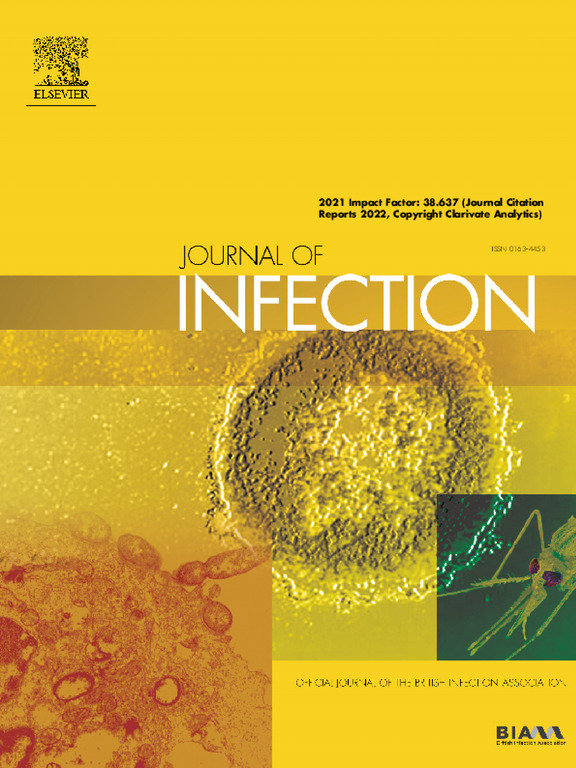产生esbl的克隆复合体14大肠杆菌的广泛传播可能是通过性传播在与有性传播感染风险的男性发生性关系的男性中传播。
IF 14.3
1区 医学
Q1 INFECTIOUS DISEASES
引用次数: 0
摘要
目的:我们鉴定了序列型(ST) 131、1193和14产广谱β -内酰胺酶大肠杆菌(ESBL-Ec)的遗传接近性,以评估社区环境中人类携带的决定因素。方法:在这项横断面研究中,我们纳入了在性传播感染(STI)或艾滋病毒门诊寻求治疗的个体。采用系统发育、核心基因组多位点序列分型和单核苷酸多态性(SNP)测定对ESBL-Ec进行比较。决定因素在STs之间进行比较,并与遗传距离相关。结果:103人携带ST131 (n=63)、ST14 (n=26)和ST1193 (n=23)菌株112株。与ST131相比,ST14分离株更常见于任何STI患者(p=0.031)和男男性行为者(p结论:在感染STI的高危人群中,ST14和ST1193 ESBL-Ec正在出现。特定的性传播途径可能在其传播中起作用。本文章由计算机程序翻译,如有差异,请以英文原文为准。
Extensive dissemination of ESBL-producing Clonal Complex 14 Escherichia coli is likely spread through sexual transmission among men who have sex with men at risk of sexually transmitted infections
Objectives
We characterized the genetic proximity of Sequence Type (ST) 131, 1193 and 14 Extended-Spectrum Beta-Lactamase-producing E. coli (ESBL-Ec) to assess human determinants of carriage in community settings.
Methods
In this cross-sectional study, we included individuals seeking care at a sexually transmitted infection (STI) or HIV outpatient clinic. ESBL-Ec were compared using phylogeny, core-genome Multi-Locus Sequence Typing and Single-Nucleotide Polymorphism (SNP) determination. Determinants were compared between STs and correlated to genetic distances.
Results
103 individuals carried 112 strains of ST131 (n=63), ST14 (n=26) and ST1193 (n=23). Compared to ST131, ST14 isolates were more commonly found in individuals with any STI (p=0.031), men who have sex with men (p<0.001) and recent antibiotic use (p=0.021); whereas ST1193 isolates were more commonly found in individuals who engaged in insertive anal sex in <6 months (p=0.017). ST131 isolates showed high genomic diversity, while other STs evidenced a high level of proximity. SNPs data indicated the likely spread of a single ST14 (range=1;32) and some ST1193 clusters (range=2;111), which were linked to ST-specific sexual behaviors.
Conclusions
In populations of those at risk of acquiring STI, ST14 and ST1193 ESBL-Ec are emerging. Specific sexual transmissions routes are likely to play a role in their spread.
求助全文
通过发布文献求助,成功后即可免费获取论文全文。
去求助
来源期刊

Journal of Infection
医学-传染病学
CiteScore
45.90
自引率
3.20%
发文量
475
审稿时长
16 days
期刊介绍:
The Journal of Infection publishes original papers on all aspects of infection - clinical, microbiological and epidemiological. The Journal seeks to bring together knowledge from all specialties involved in infection research and clinical practice, and present the best work in the ever-changing field of infection.
Each issue brings you Editorials that describe current or controversial topics of interest, high quality Reviews to keep you in touch with the latest developments in specific fields of interest, an Epidemiology section reporting studies in the hospital and the general community, and a lively correspondence section.
 求助内容:
求助内容: 应助结果提醒方式:
应助结果提醒方式:


